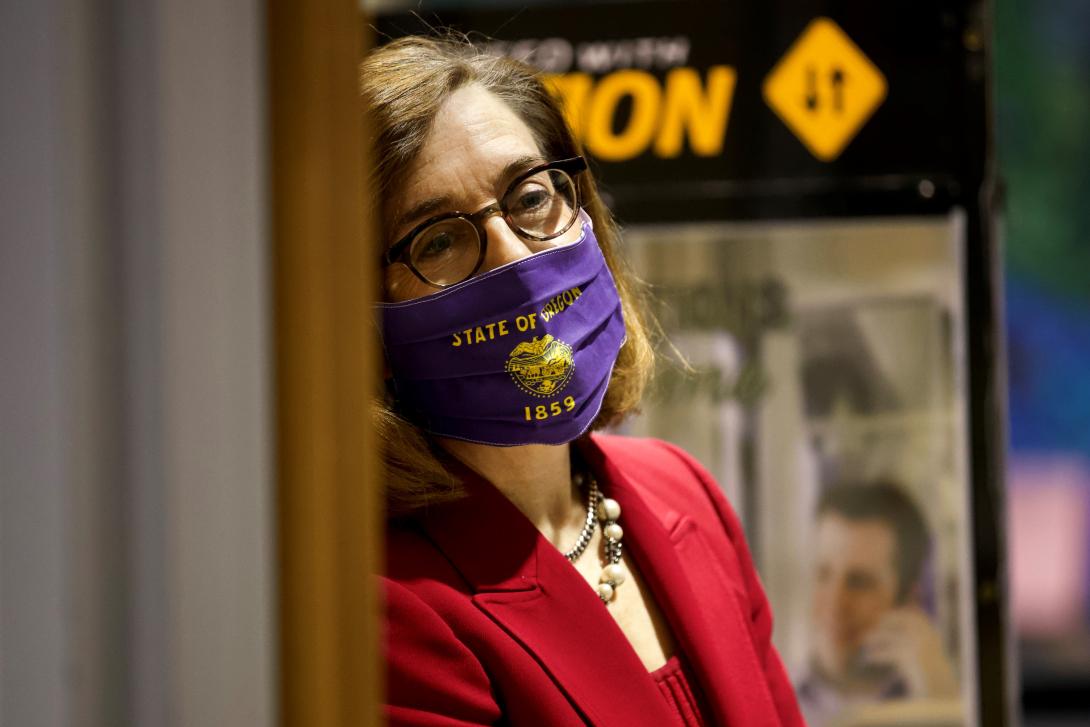
Gov. Kate Brown pledged a commitment to affordable and accessible health care on Thursday and reminded Oregonians that the pandemic is a grueling marathon, not a sprint.
Brown released her annual state of the state address on Thursday in a virtual video that reflected, once again, how the pandemic has changed society and stopped crowded gatherings.
It’s been nearly a year since the COVID-19 pandemic hit Oregon. In her speech, Brown said the pandemic has demonstrated the need for all to have access to affordable health care and for racial equity as minority communities have disproportionately shouldered the brunt of the impact.
Specifically, Brown said she is committed to immediately moving forward a committee’s recommended framework for keeping health care costs down. The recommendations came last week from the state’s Implementation Committee for Oregon’s Sustainable Health Care Cost Growth Target Program. The committee formed as a result of Senate Bill 889, which was signed into law in 2019.
Those recommendations include capping health care costs at 3.4% annually, which would cut Oregon’s current annual per-capita health care spending increase in half. The proposal also would hold insurers and providers accountable if they exceed the cap in multiple years.
“If the pandemic has taught us anything, it is that everyone -- every Oregonian -- deserves access to affordable health care,” Brown said.
As part of her presentation, Brown interviewed people about different issues, from health care to the wildfires to criminal justice reforms.
Dr. Antwon Chavis, a pediatrician at Oregon Health & Science University’s Doernbecher Children’s Hospital, made an appearance. Chavis spoke about his conversations with parents during the pandemic.
“To be frank, parents are losing jobs, and there’s a lot more financial insecurity,” he said.
Chavis also spoke about the need for children to have in-person instruction and interaction in school instead of online-only instruction.
Brown has come under criticism for putting teachers ahead of senior citizens for vaccinations so schools can reopen sooner.
The move has prompted widespread criticism because senior citizens are more likely to be hospitalized or die if they catch COVID-10. The Oregon Education Association, which represents more than 42,000 teachers, favors of vaccinating seniors before educators.
Chavis said it’s important to get young people back in school because not all children child can benefit from online instruction. For example, children in refugee families with language barriers are at a disadvantage when it comes to virtual instruction, he said.
“I’m worried because I feel like we are at significant risk of really widening this racial disparity of educational outcomes,” he said.
He also said he and his fellow medical providers trust the researchers who developed the vaccinations for COVID-19.
With uncertain vaccine supplies, Brown didn’t make any promises about when groups of people will be able to be vaccinated.
Brown said she established an incident management team to prepare for the possibility of COVID-19 coming to Oregon exactly a year ago. On Feb. 28, Oregon had its first positive case, a person who was only the second in the U.S. to get the virus without traveling abroad.
Since then, more than 1,600 Oregonians have died in the pandemic.
“Now, we know we are in it for the long haul,” Brown said. “We were preparing to run a marathon.”
You can reach Ben Botkin at [email protected] or via Twitter @BenBotkin1.

"Affordable Health Care" is defined by those who can afford it.
To continue on this path will only result in continued structural racism in our health delivery systems. More rural clinics and hospitals will close. What the pandemic has really shown us is that everyone must get health care always.